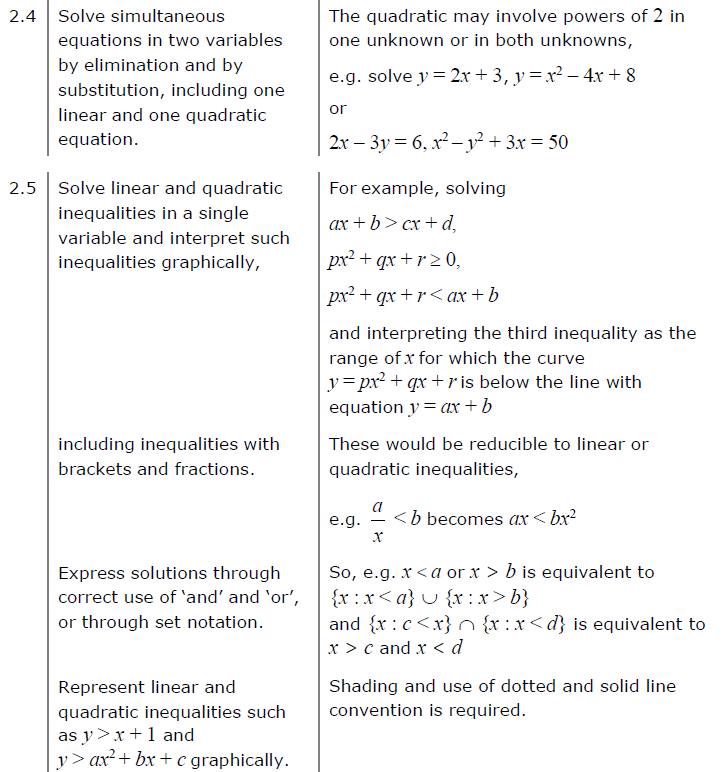
Check solutions to simultaneous equations
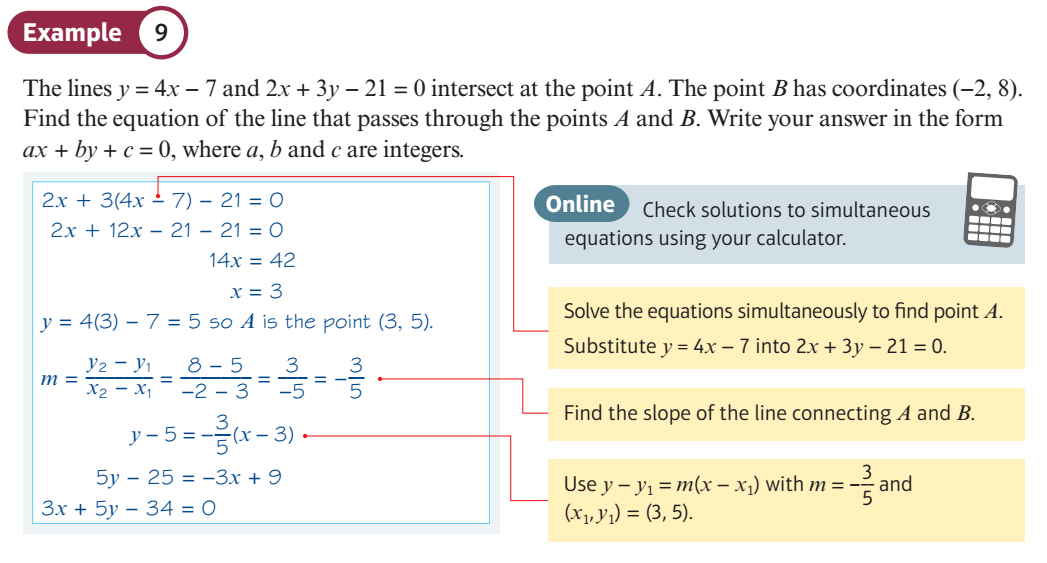
Find the point of intersection graphically
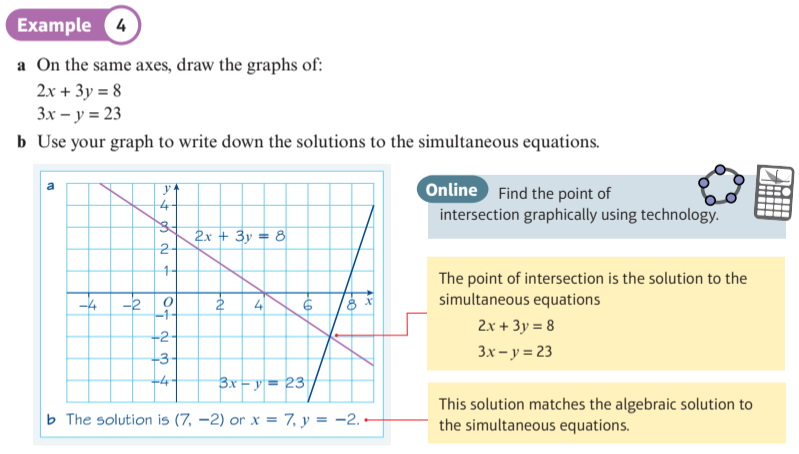
Plot the curve and the line to find the two points of intersection
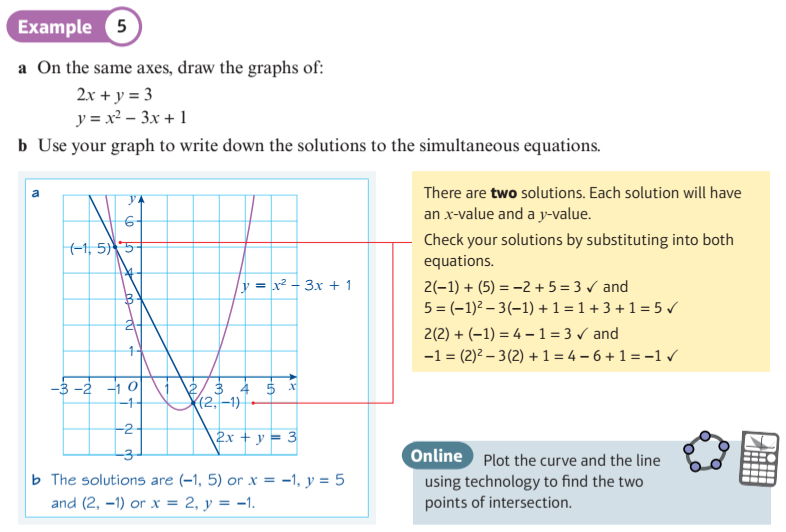
Equations and inequalities: Page 44, Example 6
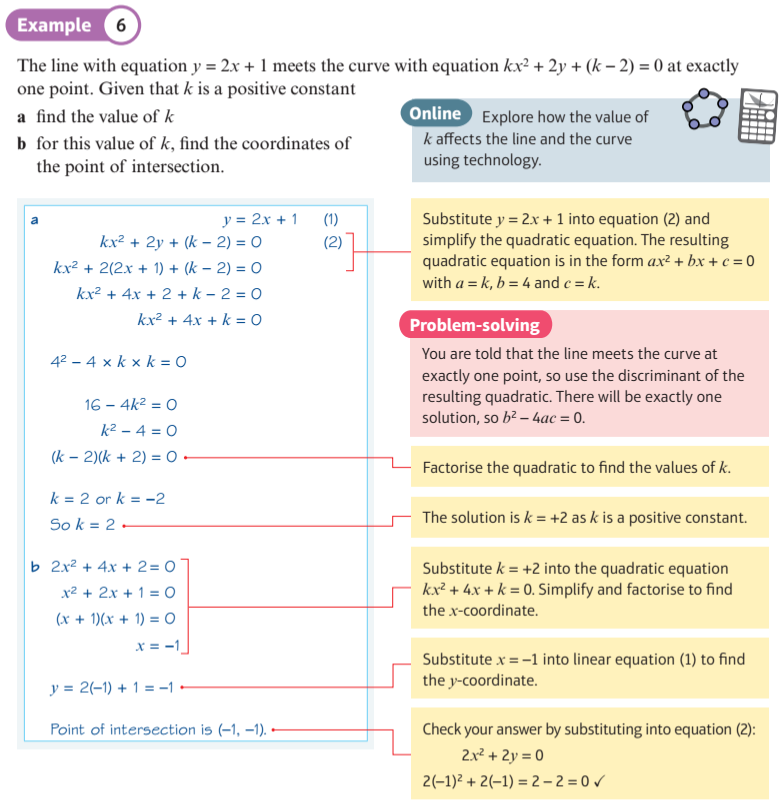
Explore which regions on the graph satisfy which inequalities
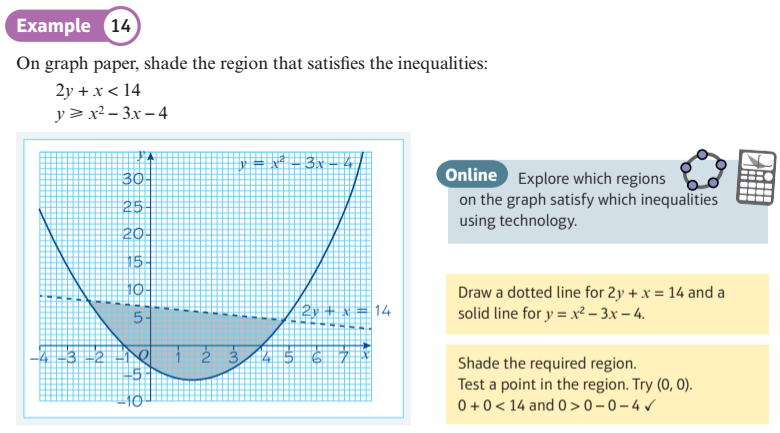
Solving Simultaneous Linear and Quadratic
Solution of simultaneous equations depends on whether or not their graphs intersect.
This display will help you understand how you can solve a Quadratic and Linear equation simultaneously.
You can find one or more common 'x's where the difference between the equations is zero, and then substitute these 'x's back into either equation to find the corresponding 'y's. The linear equation might be the simpler one to substitute your 'x' into, but it can be reassuring to check each 'x' and 'y' against both equations.
You can find one or more common 'x's where the difference between the equations is zero, and then substitute these 'x's back into either equation to find the corresponding 'y's. The linear equation might be the simpler one to substitute your 'x' into, but it can be reassuring to check each 'x' and 'y' against both equations.
Solving Two Simultaneous Quadratics
Solution of simultaneous equations depends on whether or not their graphs intersect.
This display will help you understand how you can solve two quadratic equations simultaneously;
one marked in blue and one marked in red.
You can find one or more common 'x's where the difference between the equations is zero, and then substitute these 'x's back into either equation to find the corresponding 'y's. It can be reassuring to check each 'x' and 'y' against both equations.
How many solutions can two simultaneous quadratics have; at least and at most?
You can find one or more common 'x's where the difference between the equations is zero, and then substitute these 'x's back into either equation to find the corresponding 'y's. It can be reassuring to check each 'x' and 'y' against both equations.
How many solutions can two simultaneous quadratics have; at least and at most?
Investigate Linear Inequalities
The inequality $ax + b > cx + d$ can be investigated in this display.
The line $y = ax + b$ is shown in blue and the line $y = cx + d$ is shown in red.
$ax + b > cx + d$ where the blue line lies above the red line.
The solution is shown on the number line at the bottom.
Note that the solution is itself an inequality, but in terms of just x.
Note also, that the intersection point is shown as an open circle on the number line, because it isn't itself included in the solution.
When the solution lies to the left of the intersection you should be able to see how the direction of an inequality reverses when multiplying or dividing both sides by a negative number.
The line $y = ax + b$ is shown in blue and the line $y = cx + d$ is shown in red.
$ax + b > cx + d$ where the blue line lies above the red line.
The solution is shown on the number line at the bottom.
Note that the solution is itself an inequality, but in terms of just x.
Note also, that the intersection point is shown as an open circle on the number line, because it isn't itself included in the solution.
When the solution lies to the left of the intersection you should be able to see how the direction of an inequality reverses when multiplying or dividing both sides by a negative number.
Investigate Quadratic Inequalities
The quadratic inequality $a{x^2} + bx + c < 0$ can be investigated in this display.
The curve $y = a{x^2} + bx + c < 0$ is plotted, and the inequality holds where this curve lies below the x-axis.
The solution is shown on the number line at the bottom.
Note that the solution is itself an inequality, but in terms of just x.
Note also, that intersection points are shown as open circles on the number line, because they aren't themselves included in the solution.
The curve $y = a{x^2} + bx + c < 0$ is plotted, and the inequality holds where this curve lies below the x-axis.
The solution is shown on the number line at the bottom.
Note that the solution is itself an inequality, but in terms of just x.
Note also, that intersection points are shown as open circles on the number line, because they aren't themselves included in the solution.
Investigate Quadratic/Linear Inequalities
The solutions to inequalities like $\color{green}{a{x^2} + bx + c \ge dx + e}$ can be illustrated graphically.
Both the curve $\color{blue}{y = a{x^2} + bx + c}$ and the line $\color{red}{y = dx + e}$ are plotted, and the inequality holds where the curve lies on or above the line.
The solution is shown on the number line at the bottom. Note that the solution is itself an inequality, but in terms of just x. Note also, that intersection points are shown as closed circles on the number line, because they are included in the solution.
Both the curve $\color{blue}{y = a{x^2} + bx + c}$ and the line $\color{red}{y = dx + e}$ are plotted, and the inequality holds where the curve lies on or above the line.
The solution is shown on the number line at the bottom. Note that the solution is itself an inequality, but in terms of just x. Note also, that intersection points are shown as closed circles on the number line, because they are included in the solution.
